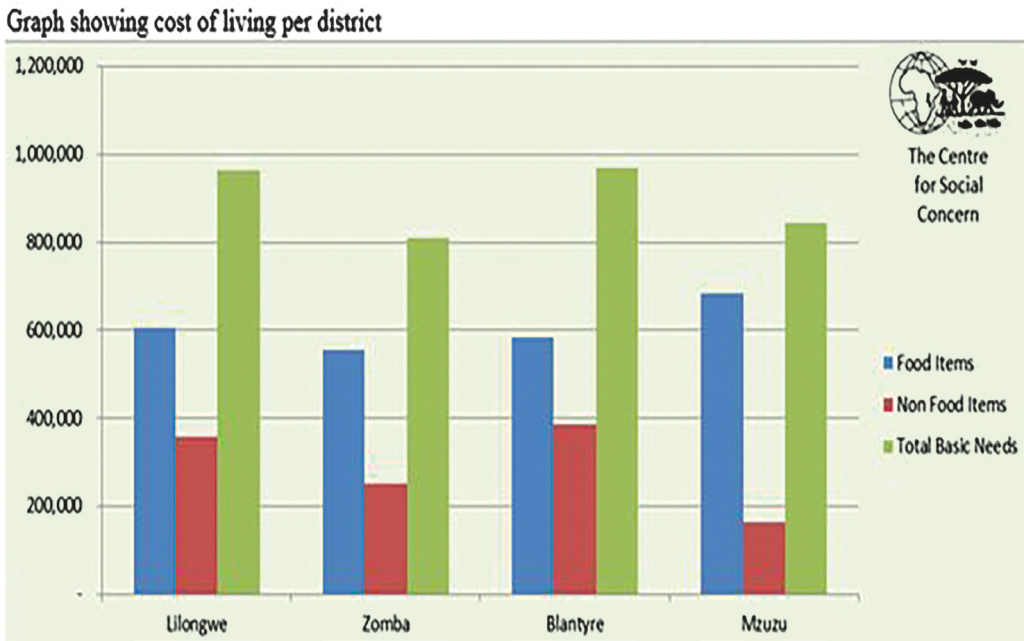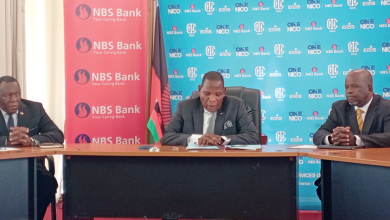Economic pressure on households deepens
Centre for Social Concern (CfSC) says Malawi is still grappling with a worsening cost of living which is pushing many into poverty and threatening the country’s social and economic stability.
The alarm comes in the work of published CfSC data showing that the average cost of living for an urban low-income household has increased by 1.9 percentage points from K880 053 in June to K896 980 in July 2025 for a family of six.
This follows another steep 6.6 percent jump between May and June, signalling an unrelenting upward trend in living costs.

At the heart of this crisis lies maize, Malawi’s staple food and a lifeline for most households.
During the month under review, CfSC data show that maize prices climbed sharply in Lilongwe from K51 250 to K55 625, Blantyre from K55 000 to K60 000 while Zomba saw the steepest jump from K50 571 to K60 857, a 20 percent increase in just 30 days.
Mzuzu, on the other hand, recorded a slight decrease, from K67 500 to K64 167.
In a written response on Thursday, CfSC economic governance officer Agnes Nyirongo warned that unless urgent and targeted interventions are implemented, the nation risks entrenching poverty for generations to come.
She said: “For many families, this is not a matter of adjusting budgets—it is a question of whether they can afford their next meal. Basic needs are slipping out of reach, forcing painful trade-offs between eating, sending children to school, or seeking medical care.
“When three-quarters of a nation are living below the poverty line, the issue becomes a moral and political challenge. The cost of living crisis threatens to undermine social cohesion, deepen inequality, and erode public trust in governance.”
Nyirongo observed that the crisis is exacerbated by the World Bank’s recent adjustment of the international poverty line to $3(about K5 000) per day, under which, an estimated 74 percent of Malawians are now classified as living in poverty.
Already, in April this year, the World Bank estimated that an additional 417 000 people in Malawi will this year fall below the international poverty line of $2.15 (about K3 764) per day amid ongoing challenging economic environment and rising food insecurity.
The Bretton Woods institution highlighted that Malawi’s real gross domestic product (GDP) is projected to grow modestly by two percent during the year under review, which would not be sufficient to prevent a fourth consecutive contraction in per capita income.
In the past three years, the World Bank says per capita income has declined as Malawi’s economic growth at below two percent lagged population growth rate of 2.3 percent, coupled by widening fiscal and current account deficits, an unsustainable debt burden, increasing capital and price controls and severe foreign exchange shortages.
Published data from the International Monetary Fund (IMF) shows that the GDP per capita income has dropped over the past four years to $463.73 (about K810 713) in 2024 from a peak of $580.92 (about K1 million) in 2021.
Centre for Green Economy in Developing Countries global lead Velli Nyirongo said in an interview on Sunday that efforts to reduce poverty and boost the economy are being undermined, leaving the majority of Malawians with little hope for better conditions unless significant reforms and support are put in place.
“High inflation and food shortages are making life harder for most Malawians, as basic goods become unaffordable and nearly a third of the population faces serious hunger,” he said.
Malawi Congress of Trade Unions president Charles Kumchenga observed earlier that the cost of living has become unbearable for most workers in the country.
Ministry of Finance and Economic Affairs spokesperson Williams Banda is on record as having said that government is implementing a number of initiatives to promote economic growth and development.
In the 2025/26 Budget Statement, Minister of Finance Simplex Chithyola-Banda said government remains hopeful that the economy will grow at 3.2 percent in 2025.





